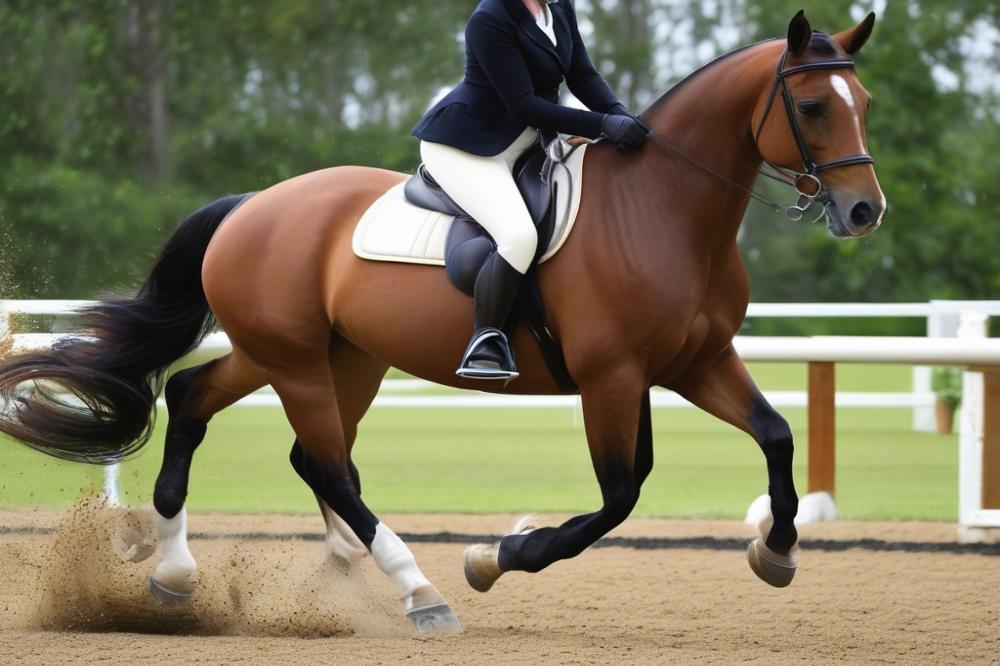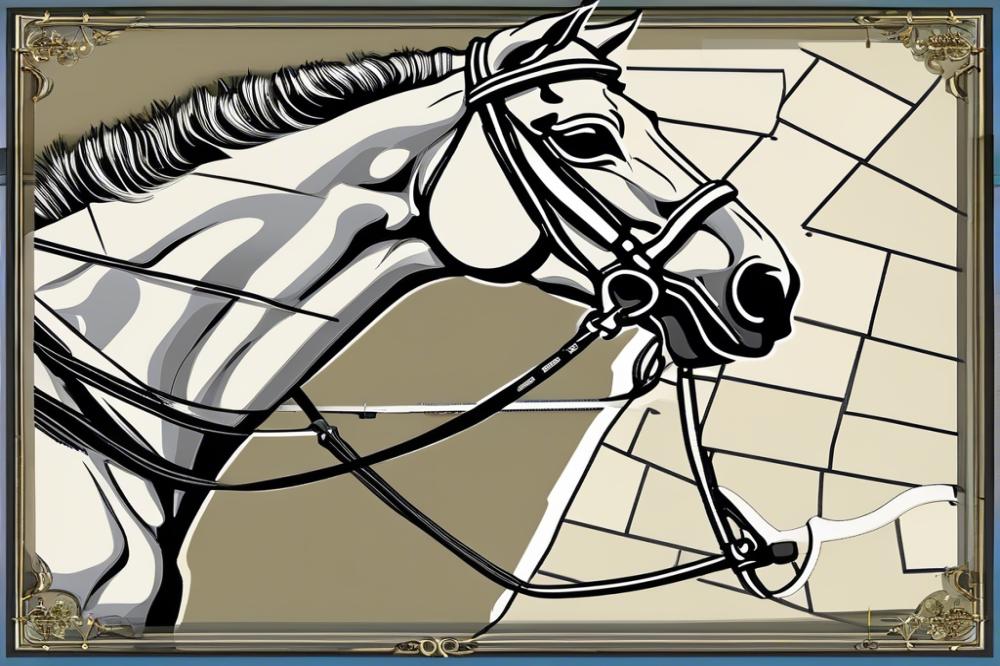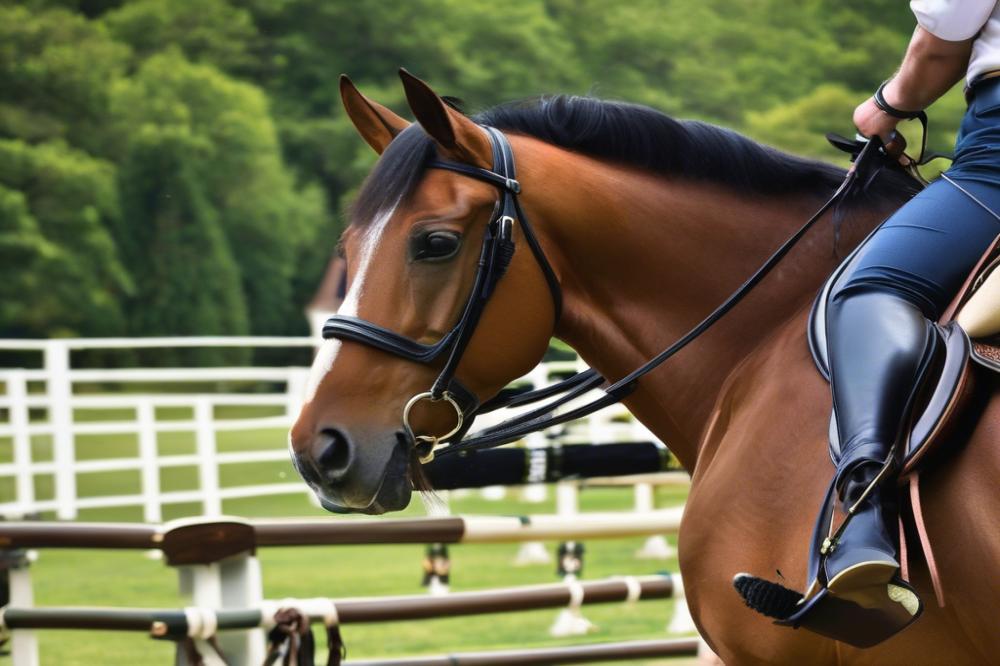Understanding the Essence of Tacking Up
Tacking up your horse is more than just a routine; it’s a vital part of horse riding and training. Picture it as layering many pieces of a puzzle before going on a grand adventure. When you do it right, you not only ensure the comfort of your horse but also lay the groundwork for a successful ride. Just as a group of horses needs proper care, so does each individual partner before they hit the trail or the arena.
So, why is it important to master this skill? Proper tacking up directly affects the well-being of your horse. An ill-fitting saddle or a poorly adjusted bridle can lead to discomfort, which might turn your dream ride into a nightmare. This isn’t just about the horse’s comfort; it also plays a role in safety for both you and your equine friend. After all, nobody wants to deal with a spooked horse when they’re trying to enjoy a leisurely trot around the riding ring!
The tacking process itself isn’t overly complicated, but it does require attention to detail. From grooming to checking gear, each step has its purpose. You begin by ensuring your horse is clean and comfortable, followed by carefully placing the saddle and securing the bridle. Skipping steps or rushing through them can lead to all sorts of issues later on. Think of it like cooking; miss a crucial ingredient, and your dish could be a total flop!
This article aims to guide you through the steps of tacking up, offering tips and insights that will elevate your horse care game. Whether you are an experienced rider or just starting your journey into equestrian techniques, grasping the right approach to tacking up will serve you well. So saddle up your curiosity, and let’s dive into the world of horse riding, with all its unique challenges and rewards, including the classic debate of camel vs horse strength!
Understanding Tack

Different Types of Tack and Equipment
When it comes to horse riding, the right tack is essential. Various pieces of equipment work together as a team. A saddle is one of the first things that comes to mind. It’s where you sit, making it crucial for comfort and control. A bridle is another key component. This fits around the horse’s head, allowing you to steer and communicate. Don’t forget about the girth! It keeps the saddle in place, kind of like your favorite belt.
You might also need stirrups. These are the metal loops where your feet go. They help you balance while riding. Additionally, reins connect to the bridle and let you guide the horse. Each piece plays a part in the overall riding experience, so knowing them is important.
Purpose of Each Type of Tack
Let’s break it down a bit more. The saddle distributes your weight over the horse’s back. This helps your noble steed stay comfortable while you enjoy your ride. The bridle doesn’t just look fancy; it helps you control the horse with gentle pressure. Think of it like holding hands while crossing the road—you guide them safely.
Girths need attention too. A well-fitted girth prevents the saddle from sliding around. Nobody wants a saddle that slips and slides. Stirrups give you that sense of security, especially when you encounter something surprising on the trail. Each part of your tack has a job, and they all work together in harmony.
Importance of Choosing the Right Fittings
You might wonder why choosing the right tack is crucial. Using the wrong size can create all sorts of problems. An ill-fitting saddle could cause pain for your horse, and that’s definitely not what you want. Think about it: would you like to wear shoes that are too tight? Horses feel that discomfort too!
Fittings should be snug but not too tight. A little wiggle room is necessary. Always check the girth and bridle for proper adjustments. When you pay attention to these details, you’re really honing your equestrian skills. Careful fitting impacts horse training and overall relationships between rider and mount.
Finding the right equipment may take time. But it’s worth every moment spent. The search can feel a bit like shopping for a new pair of jeans—frustrating yet rewarding when you find just the right fit. So, embrace this journey. The right tack transforms a basic ride into a fantastic riding experience. Your horse will thank you with every trot and canter, and you’ll feel like a real pro!
Preparing Your Horse

Key Considerations Before Tacking Up
Before you dive into tacking up, take a moment. Think about what your horse has been doing lately. Has he had a long day in the pasture or just a quick trot around the yard? The answers to these questions can shape your approach. Consider the weather, too. A chilly day might mean more layers, while summer sun can lead to less fuss. Gather your gear before heading out. It saves time and energy, especially when dealing with a horse that might be antsy to get going.
Grooming for Comfort and Cleanliness
Grooming isn’t just about making your horse look good. It’s an essential part of horse care. A good brush removes dirt and loose hair, promoting a healthy coat. Grab a curry comb and start from the neck, working your way down. Little swirls work wonders! Your horse will appreciate the attention. Don’t forget the legs. Use a softer brush there, as the skin can be sensitive. Oh, and while you’re at it, check for mud and burrs that can sneak in unexpected places. A clean horse is a happy horse!
Checking for Injuries or Sensitivities
Now, let’s talk about safety. Horses can be accident-prone. While you’re grooming, keep an eye out for any cuts or bumps. If something looks off, it’s worth a closer look. Gently touch different areas to see if your horse flinches. Sensitive spots may indicate a bigger issue. Being observant is one of the best equestrian skills you can develop. Remember, horse training isn’t just about riding; it’s about understanding your animal too. If you find anything concerning, it’s better to consult a vet than to risk riding that day. A little caution goes a long way in keeping your horse safe and sound.
Tacking Up Process

Tacking up a horse is an important step in preparing for a ride. Following a clear process can help both you and your horse feel more comfortable. Let’s walk through the steps together.
Steps to Follow When Tacking Up a Horse
Start by gathering all your equipment. This includes the saddle, girth, bridle, and any other necessary gear. It can be easy to forget something, so a checklist could be handy. Approach your horse calmly to build trust. Can you imagine how anxious they feel? A kind word or soft pat goes a long way.
Putting on the Saddle
With your horse standing still, lift the saddle onto their back. This is where you need to be mindful of where the saddle sits. It should rest just behind the withers. No one wants to ride a cranky horse! Balance the saddle before securing it in place. Use your western or English-style saddle pad to prevent friction. Make sure the pad is smooth and not bunched up.
Adjusting the Girth
Next, it’s time to grab the girth. Loop it under your horse’s belly and attach it to the saddle. Be careful not to tighten it too fast. Start with a few inches of slack. Always check that it’s even on both sides. Girths shouldn’t be too tight right away; horses deserve a little wiggle room. If unsure, gently squeeze the saddle without putting your full weight on it. This trick helps you know how much tighter to make it.
Placing the Bridle
Now it’s time to bridle your horse. First, grab the bridle and check that everything is in good condition. The last thing you need is a broke strap mid-ride! Stand next to their left side and calmly slide the bit into their mouth. It might help to keep a treat handy as a distraction. Cinch it up gently and make sure the reins are hanging down neatly. Suddenly, a productive ride is at hand!
Practicing these equestrian skills regularly helps you and your horse feel more at ease. Each step matters, whether it’s horse care, horse training, or just looking cool while tacking up. Always remember, a happy horse makes for a happy rider! So, take your time and enjoy every moment.
Common Mistakes to Avoid
Tacking up may seem simple, but many make frequent errors. One common mistake is skipping the grooming step. A dirty horse can have hidden dirt or irritating grass stuck to its coat. This can cause discomfort later. Always brush off the dirt before putting on tack.
In addition, using equipment that doesn’t fit properly is another big error. A saddle that sits too low or a bridle that’s too tight can lead to serious issues. Your horse deserves the right gear that feels just right. Not only will proper fit improve performance, but it also promotes comfort during horse riding.
Sometimes, folks forget to check the girth’s tightness before taking off. An overly loose girth can allow a saddle to shift during a ride. This can be really dangerous! If you’re unsure about tightness, check it twice, especially if you have a bouncy mount.
Don’t overlook signs of discomfort. Horses communicate through their body language. If your horse is pinning its ears back or swishing its tail, pay attention! It’s trying to tell you something important. A horse showing signs of anxiety may not be enjoying the experience. Horses can’t speak our language, but they express feelings loud and clear.
Also, remember that tacking up is part of horse care and training. Keep an eye out for any unusual behavior. A horse that is fidgeting or trying to bite at its saddle may be uncomfortable. Be attentive to these cues during your tacking process.
Lastly, always check the equipment for wear and tear. A broken strap or a worn girth can turn a good ride into a disaster. Regularly inspect your gear to avoid unexpected issues. You don’t want to be that person who finds out at the wrong time!
Safety Tips
When handling horses, safety is your best friend. Both the horse and you deserve a safe experience. Nobody wants to get kicked, and horses don’t want to feel nervous. A calm horse makes the whole process easier.
First, think about how to hold the lead rope. Keeping it short gives you better control. It’s like having a good grip on a slippery fish! You’re more secure when you aren’t giving the horse too much rope to play with.
A horse can be unpredictable, especially when it’s excited. Speak softly to your horse as you approach. Your voice can be a soothing balm. If they feel calm when you’re nearby, they’re less likely to kick out or skip around.
Moving slowly is key. Rushing can lead to accidents. Consider horse training techniques that promote a sense of calm. You can practice moving slowly and with purpose. Your movements should mimic that of a gentle breeze, not a sudden storm.
Have a buddy system if possible. Working with someone else can make a big difference. If the horse becomes unruly, it’s nice to have an extra pair of hands for help. It’s like playing soccer; a team can cover more ground and handle pressure better!
Practicing good equestrian skills includes knowing when to step back. If your horse is restless, take a moment. Give them time to settle. Even the best riders must be patient. Just like baking a cake, sometimes you have to wait for it to rise before you can enjoy it!
Keep your equipment organized and in good shape. Safety gear for both horse care and yourself should never be overlooked. Check your saddle and bridle for any wear and tear. Old gear can be a recipe for disaster, much like using a rusty blade to cut your sandwich!
Stay aware of your surroundings at all times. Other horses, loud noises, or sudden movements can throw even the calmest horse off balance. Imagine a toddler surprised by a loud clap— a horse can react in that same unexpected way!
Post-Tacking Considerations
Final Checks Before Mounting
Before you hop on, do a quick inspection. Make sure the saddle is positioned right and isn’t too far back. A misplaced saddle can feel uncomfortable for your horse. Next, check the girth. It should be snug, but not so tight that it gives your horse a bellyache. You want to avoid any unwanted surprises when you’re out riding. Lastly, glance at the bridle. Is it put on correctly? Check that the bit is horizontal in the horse’s mouth. Let’s not forget the basics of horse care; it’s all about keeping our equine friends happy.
Importance of Warm-Up Exercises
Riding without warming up is like jumping into a cold pool—definitely a shock! Always make time to do some warm-up exercises with your horse. Gentle walking and stretching can get the blood pumping and muscles loosened. These preparations can also make your ride smoother. Think of it as getting your horse ready for a little workout. It’s just like an athlete preparing for a game. By incorporating these equestrian techniques, you strengthen the bond between you and your horse.
Caring for Tack After Use
After riding, give your equipment some love. Clean your tack to keep it in great shape. Wipe down the saddle and bridle to remove dirt and sweat. Neglecting this can lead to wear and tear. Use saddle soap and conditioner to keep leather supple. While some folks might overlook this, the longevity of your gear is worth the extra effort. Store everything properly, too. A cool, dry place away from sunlight is ideal. Remember, good horse training involves caring for all parts of the equestrian experience, even the gear!
Wrapping Up Your Tacking Journey
As we reach the end of our guide on tacking up your horse, let’s take a moment to revisit the main points. First, start with the right tools at hand—each piece of tack plays a vital role in ensuring both comfort for your horse and safety for you. From bridles to saddles, check everything meticulously before getting started. It’s like preparing for an important exam; you want to make sure you’ve covered all your bases!
Another significant aspect lies in developing a routine. Much like your morning ritual before school, consistency helps establish a sense of security for your horse. When they know what to expect, they’re more relaxed, making the entire process smoother. Regularly tacking up your horse helps build trust and strengthens your bond. In endurance horse riding, this connection can make all the difference on those long rides.
Don’t forget to emphasize the importance of care. Every time you handle your horse’s tack, take a moment to inspect it for wear and tear. Treat your equipment well, as it will treat you well in return. If you notice a frayed strap or a rusty bit, don’t ignore it like that forgotten math homework; addressing issues now helps prevent problems down the road.
Lastly, practicing safe tacking techniques is crucial. Always be aware of your horse’s mood and behavior. If he seems a little jittery, take a few deep breaths and stay calm—horses can sense nervousness. Safety should be your top priority; it’s better to take an extra minute to get it right than rush through and risk an accident. Remember to always adjust fit properly and don’t be shy about asking for help, especially when things get tricky. Horse leg socks can also be a fun addition, providing both protection and a dash of personality to your horse’s attire.
So there you have it! With patience, practice, and a pinch of humor, you can become a pro at tacking up your trusty mount. As you continue to learn and grow, keep these key points in mind and always prioritize safety. Happy riding!



